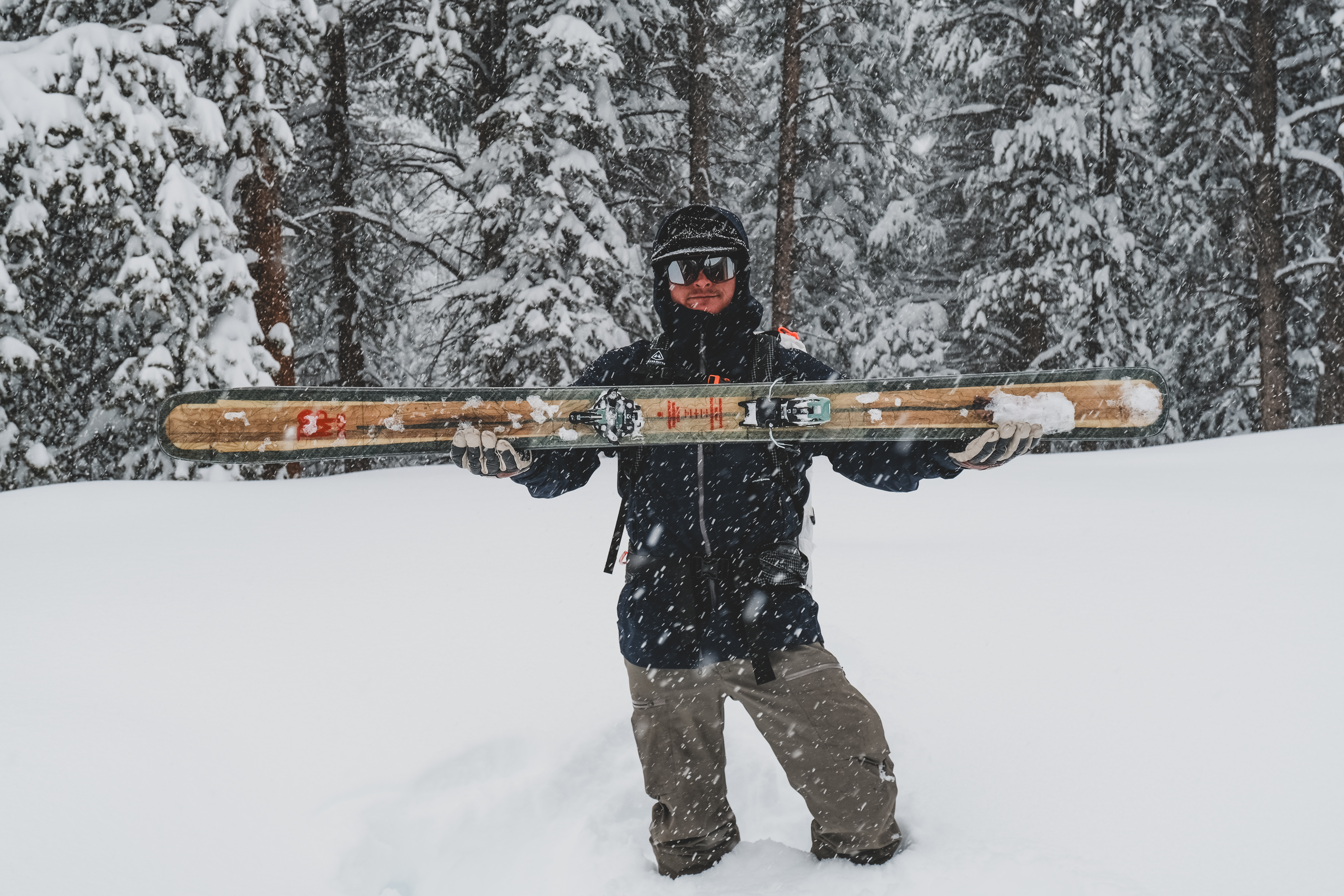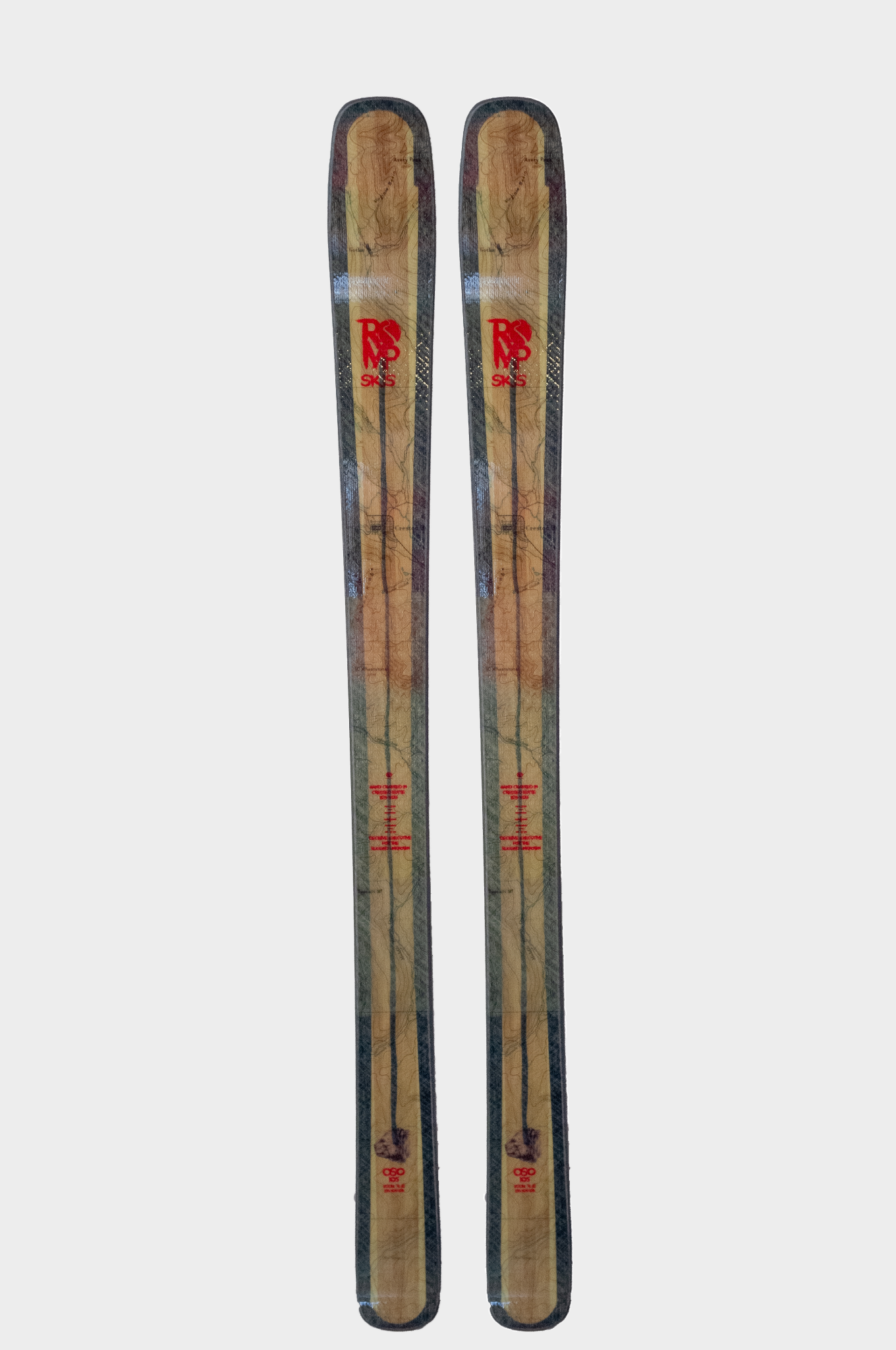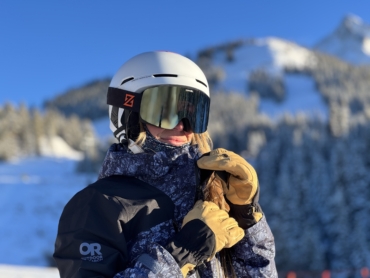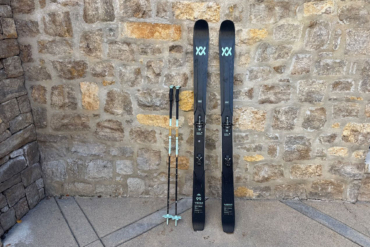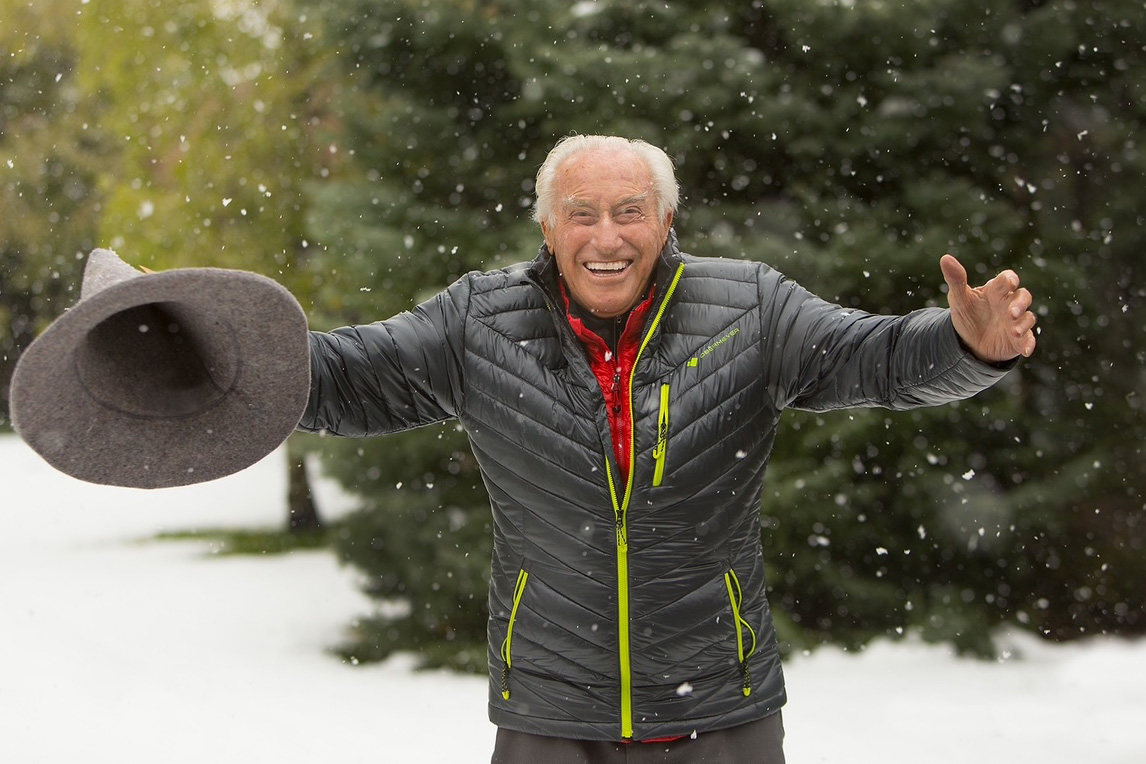We were almost at treeline when we ducked into a nook to transition. The sound of skins ripping off of skis and splitboards punctuated the howling wind. Snow wasn’t falling on us so much as swirling all around. We’d been breaking trail from the parking lot to McNamara Hut, and then up to Bald Peak for some powder turns before sunset.
My Romp Osos had been light on my feet through the hike in. And now I was about to ride them in the ski’s favorite condition: backcountry powder. The playful, poppy freestyle ski couldn’t be better suited for a day like this.
I’d skied Romp’s original Osos, testing them for GearJunkie in 2022. I liked their capacity to charge the mountain and maintain stability at speed. But their relatively long turn radius (23m on the 185 length) made them harder to maneuver in tight terrain. And they certainly weren’t the most playful model in Romp’s handcrafted lineup.
But over the 2022/23 ski season, the brand completely redesigned the Oso and released it in December 2023. Romp wanted to keep that hard-charging character it had achieved in the previous version. But now, it claims, the Oso is livelier and more playful than ever.
The 2024 Romp Oso 105s arrived in mid-December, and I mounted them with a pair of Marker Cruise AT bindings. They accompanied me on several hut trips, numerous backcountry day trips, and even a few resort days in between. Romp bills this ski as the “decisive executive for the rugged unknown.” I put that title to the test over 2½ months of hard use and great skiing.
In short: The 2024 Romp Oso 105 is more playful than previous versions of the ski. But it can still confidently tackle steep and rugged terrain. They are easy on the uphill and fun in most backcountry conditions. With added tip rocker and tail taper, the skis are nimble and easy to maneuver when things get tight. And while they’re prone to chatter in chop and chunder, for most conditions in the backcountry and resort, these are very capable and fun skis.
- Lengths: 172, 180, 188 cm
- Dimensions: 138-105-128mm (at 180 cm)
- Sidecut: 19 m (at 180 cm)
- Weight: 1,991 g (at 180 cm)
- Core: Ash/aspen
Pros
- Light on the uphill, low swing-weight during turns
- Playful rocker/camber profile
- Nimble in tight terrain
- Easy to maneuver on steeps
Cons
- Gets chattery at high speeds on choppy snow
- Doesn't edge as hard as its predecessor
Romp Oso 105 Review
The first time I saw the new Osos was in March 2023 — months before they were released. I was skiing Crested Butte with Caleb Weinberg, one of the founding brothers of Romp, and Eligh Purvis, one of the brand’s production wizards. The gorgeous wood topsheets, impressed with a topographic overlay of the Crested Butte area, caught my eye as soon as I saw them on Purvis’s feet.
Then, when I watched him jibbing, jumping, and flashing down the mountain, I knew I needed to try a pair. I could tell from watching how he skied that these were not the same Osos I was familiar with.
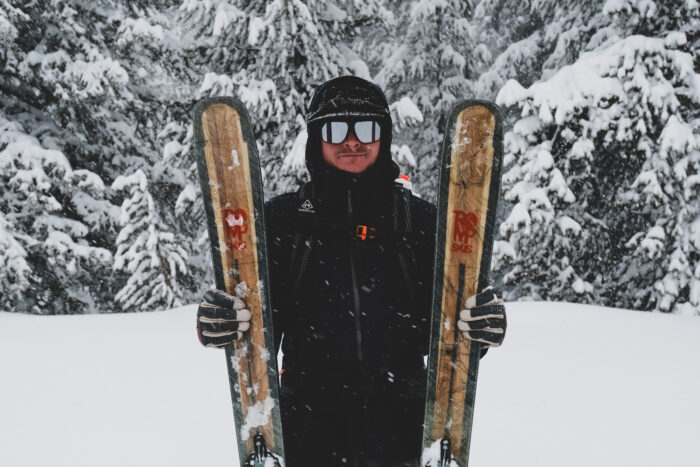
When I asked Purvis, he assured me that the Oso 105s still yearned for steep, technical terrain like that on the Butte’s Headwall or Teocali Bowl. However, the shape of the new Osos is significantly different from the previous Oso 106.
Romp increased the tail taper and rocker in the tips. That makes for a more nimble and faster-turning ski. The newer version also has a 19m turn radius, compared to the older version’s 23m radius.
Basically, Purvis said, Romp kept its favorite aspects of the old Osos and just made them a hell of a lot more playful. Romp partnered with Western State University’s Freeride Team to dial the new Oso ski in and find the perfect shape to take it to the next level.
Romp Oso 106: At the Resort
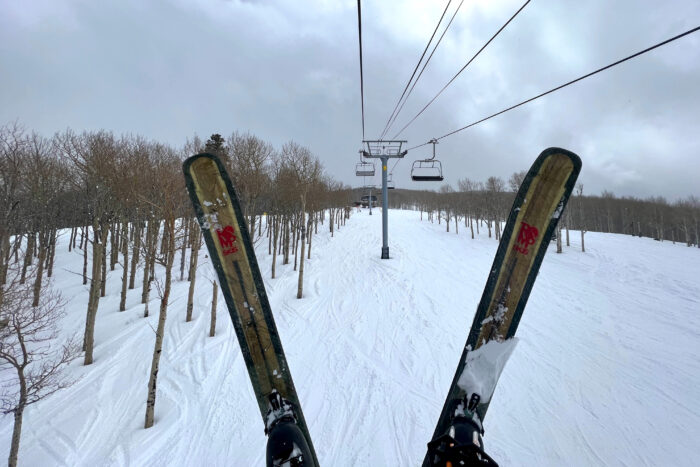
I rode these skis at the resort a handful of times. And I found myself half-wishing I’d put a downhill binding on Romp’s Oso 105s instead of the tech bindings I’d gone with. They are such a blast in bounds that I wouldn’t hesitate to recommend them for a strictly alpine setup — even though they’re so well suited for the backcountry.
On Groomers and Packed Snow
On hardpack flats and groomers, the Osos were capable and reliable. They carved well thanks to the camber underfoot and probably would have driven a much harder edge with a higher-powered downhill binding.
The 19m turn radius makes for tight, round turns that are noticeably shorter than the long (23m) arcing turns that the previous Oso made. They slarve easily for casual, slower runs, and can grab an edge and carve when pressed. You won’t be winning any downhill slalom races or slashing trenches on icepack with these skis — but they can hold an edge when you want them to.
In Bumps and Trees
After lapping a few groomers to get a baseline feel for the ski, the shape of its turns, and the power behind them, I ventured into some moguls and trees. The light 1,991g weight was easy to maneuver through them. The swing weight is low enough that my knees never felt soar or tired after a full day on the snow with the Oso 105s.
Tree runs were some of my favorites on the Oso 105s. The camber, taper, and lightweight made weaving and wiggling through the woods easy. They’re very controllable skis at speed. That made for confident runs through some of my favorite glades and meadows, even when the snow was packed and fast.
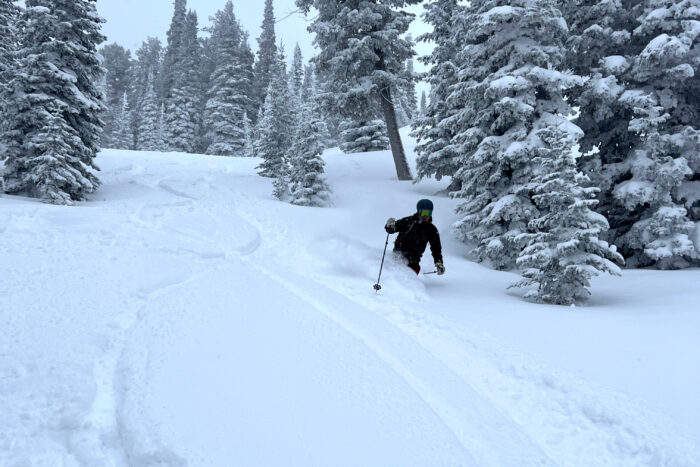
In the Steeps
Of course, steep terrain is where the Osos were born and what they were designed for. When I got them into some steep chutes and cliffs at Beaver Creek, the Osos were right at home.
The short turn radius made getting down high-angle terrain poppy and fun. I could ride the sidecut and carve quick round turns or hop-turn down the mountain. And if I needed to point it, I felt like I could trust their stability when I started picking up real speed.
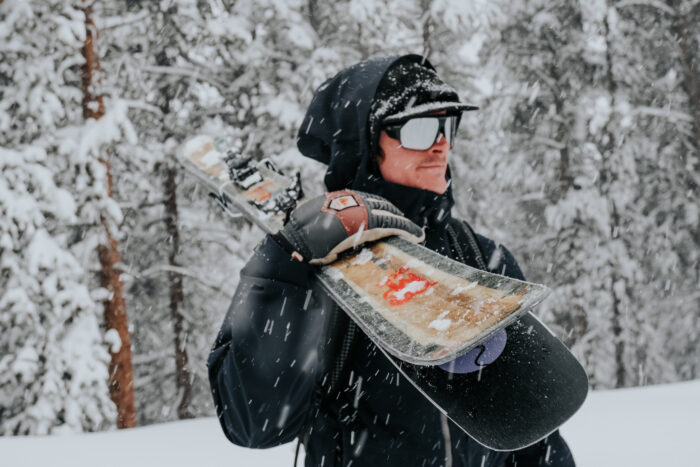
Powder vs. Chop and Ice?
On chalky snow, the Osos grip well. And they slash through thin crust fairly easily. But the best conditions, by far, for the Oso 105s are in powder (no surprises there).
The 105mm underfoot width and increased rocker at the tips made them float without much effort. The ride in anything deeper than my ankles was silky smooth and buttery. And thanks to the tighter turn radius of the new Oso, it was easy to cut into pow turns and splash deep snow.
However, after just a few runs in more exposed and choppy conditions, it became obvious that these skis are better suited for chowder over chunder, powder over ice, and chalk over chop. The ash/aspen core is damp enough to maintain contact with the snow, even in those harder conditions and at speed. But if I hit big chunks of ice, frozen chop, or even a bank of really heavy, wet snow, I’d get bucked around a bit.
Romp Oso 105: In the Backcountry
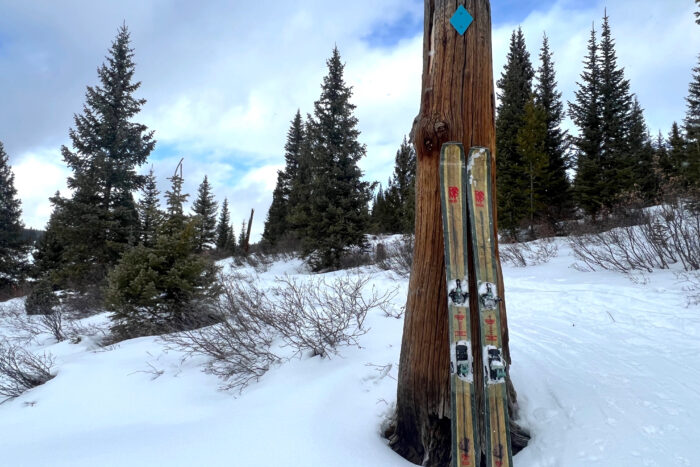
While I am still curious how the Osos would ride with a traditional alpine binding, I was happy with my choice to mount the Romp Oso 105s with a pair of tech bindings for backcountry touring. They aren’t exactly light. But at 1,991 g, they are an acceptable, if a little heavy, weight for a backcountry/touring setup.
On the uphills, the Osos excelled. They never weighed my feet down like anchors. And they had enough flex that I could easily ski over warpy, wavy, uneven skin track terrain.
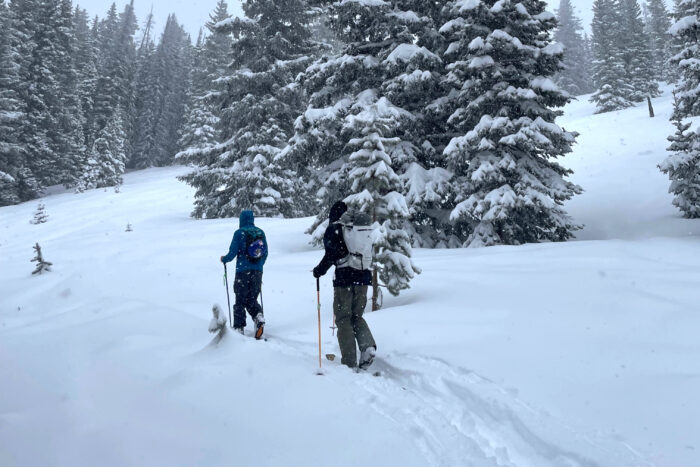
I brought these skis on a 5-day hut-to-hut trip in southern Colorado. Both on the heavy hike days and the daily strike missions in between, they were impressive. The Osos proved they’re very versatile skis, and that’s exactly what I want in the backcountry. They aren’t perfect for all conditions and terrain you’ll encounter back there — but they’re solid for 90% of conditions.
Obviously, if you’re traversing glaciers or going on long-distance tours, other ski options are far more effective. But for most of what I ski in Colorado’s backcountry, the Romp Oso 105s are perfectly suited for the job. They’ve become my go-to backcountry companions.
Room for Improvement
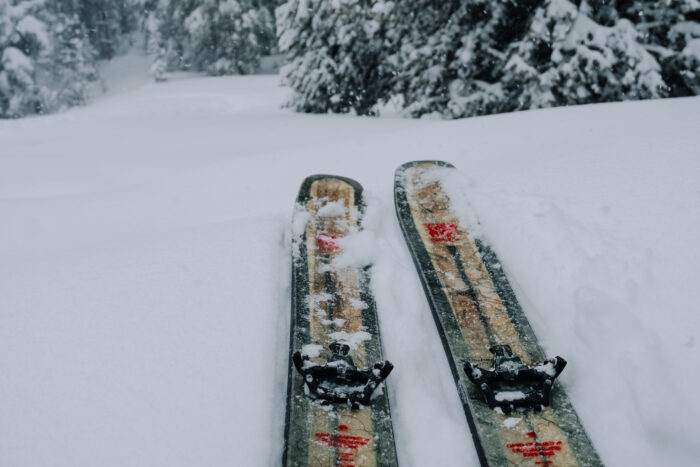
My only real wish for the Osos is that they had more aggressive edge control. I’ve ridden other Romp skis, like the Shepherd 99s, and to me, those seem to drive a significantly harder edge than the Osos.
The Shepherds also have a more dramatic sidecut (16 m) and are narrower underfoot. So it makes sense that they can carve harder than the Oso 105s. Still, I found that sometimes the Osos were inclined to release their edge and slip from carve to slarve. I didn’t experience that as much with the previous Oso 106s.
That’s not a deal breaker by any means. But it’s something to remember if you prefer skis that hold their edges with an iron grip.
Oso 106 Review: The Final Word
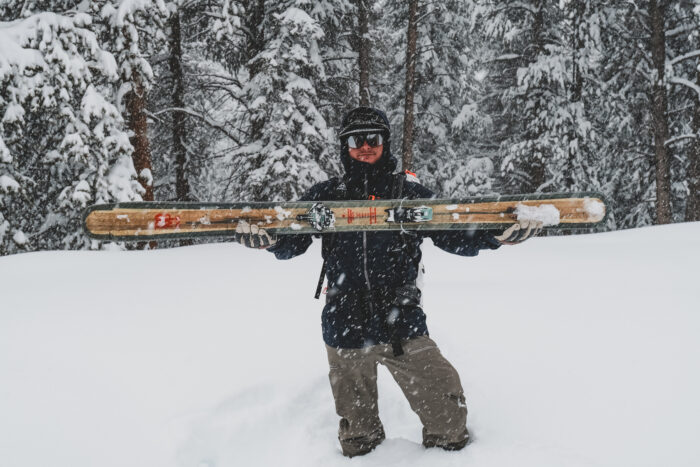
For a versatile backcountry ski that’s light on the uphill and capable and confident downhill, the Romp Oso 105s are a great option. The new topsheet design is gorgeous. They are a ton of fun. And the Osos proved themselves in both backcountry and resort terrain and a gamut of snow conditions.
I was really pleased with these skis and I look forward to riding them every time I head out for the backcountry. I still might swap out the bindings next season, just to see how they would ride in a resort with a downhill setup. I’m really curious what kind of difference that would make.
But the fact that I can’t decide whether they’d be a better backcountry ski or resort ski should speak volumes to the Oso’s all-around performance.
The Romp Oso 105 is available on the Romp Website as a “Romp Ready” ski ($850) or you can have Romp build you a custom pair. To learn more about the brand’s custom builds, visit its webpage. If you want to compare the Osos to some of GearJunkie’s favorite all-mountain skis, check out our guide to the Best All-Mountain Skis.
